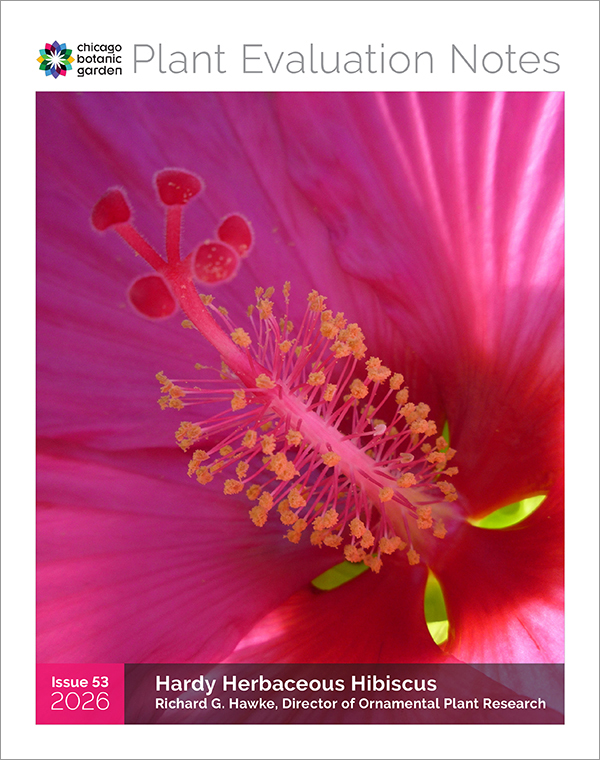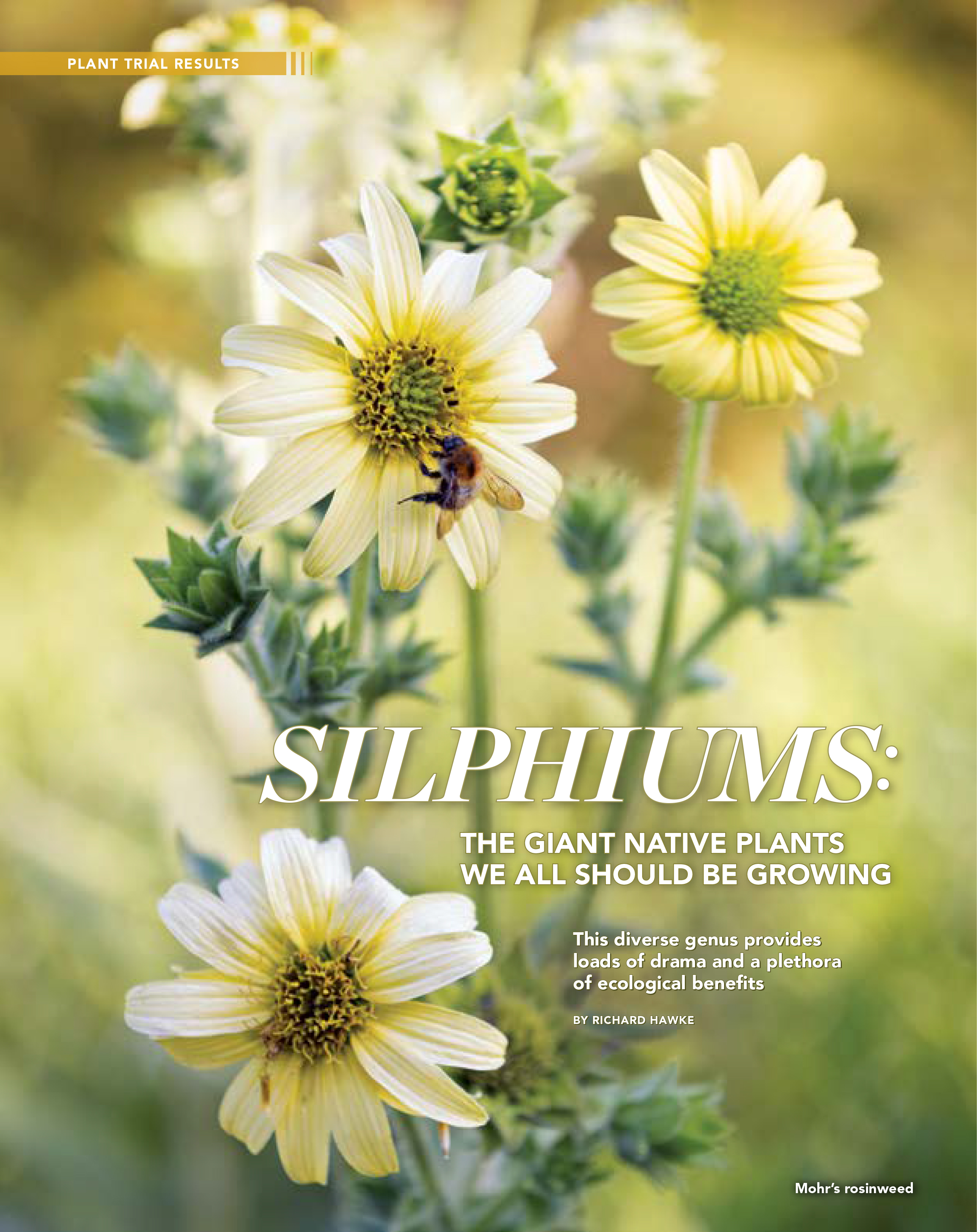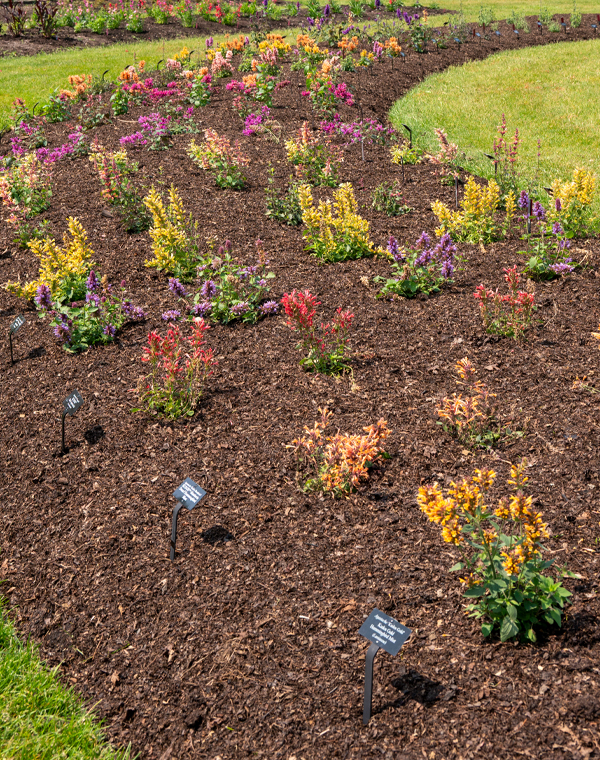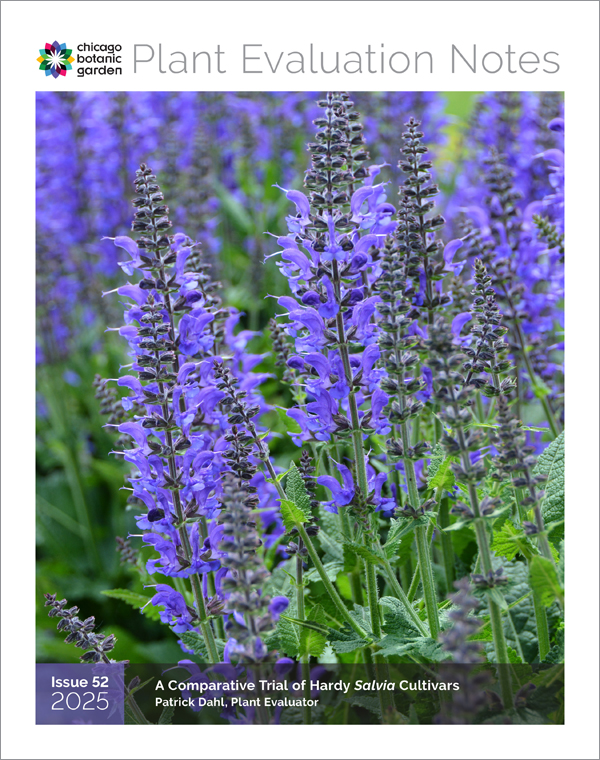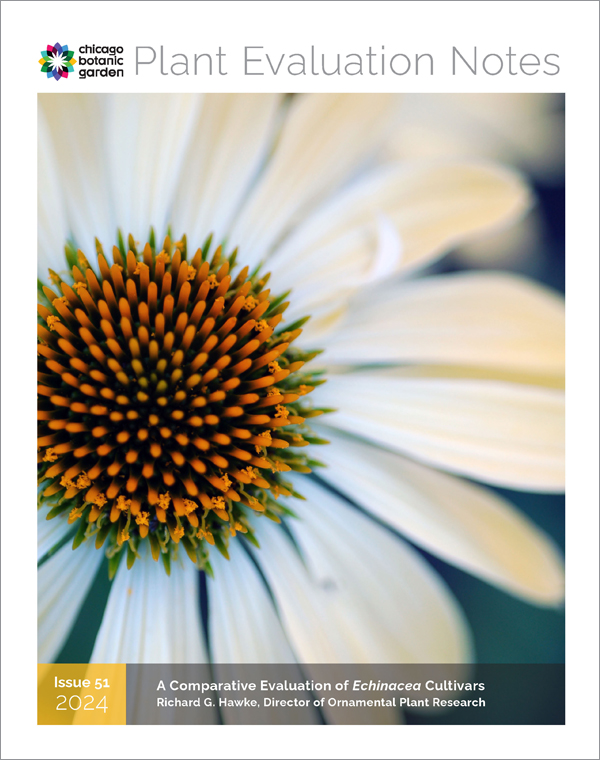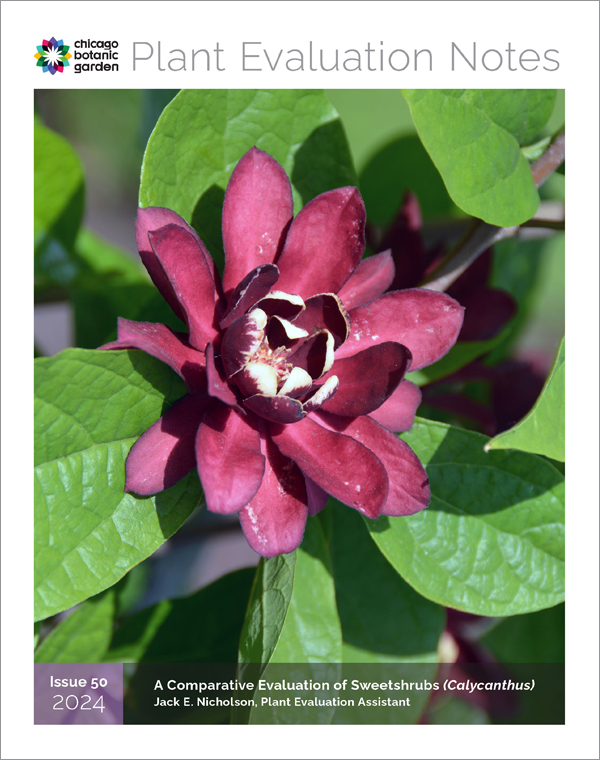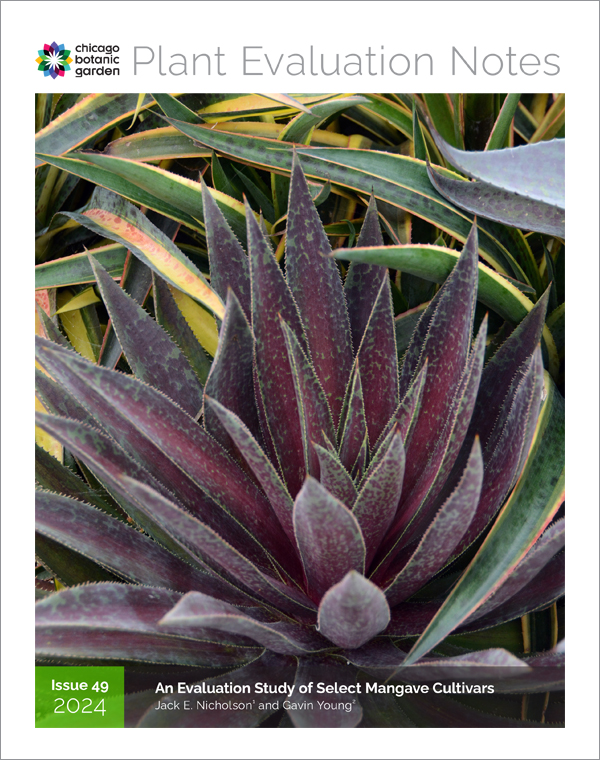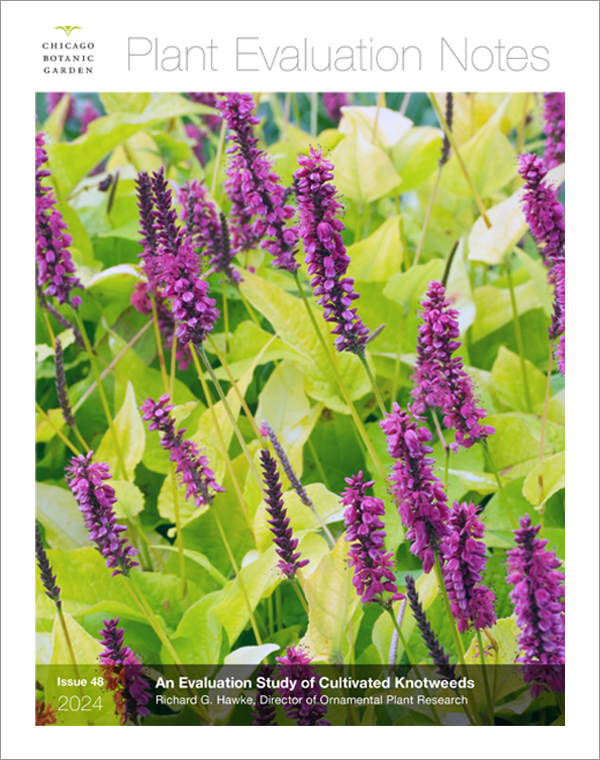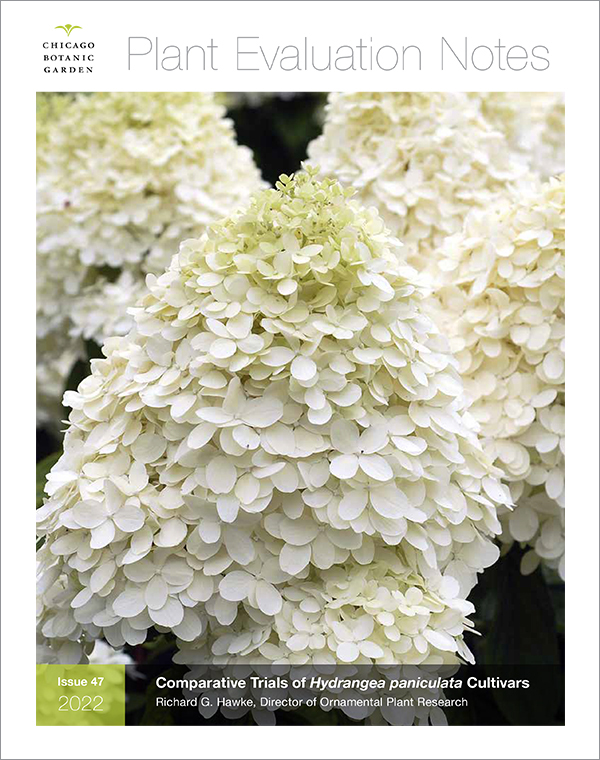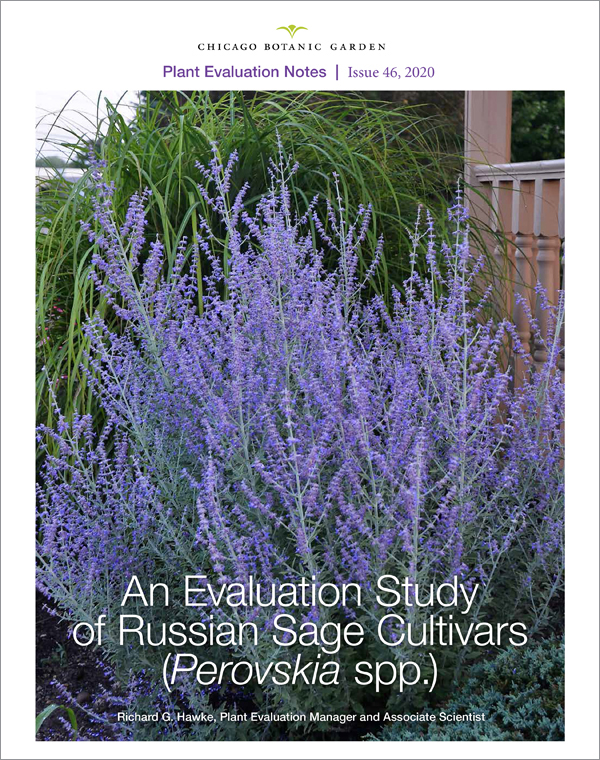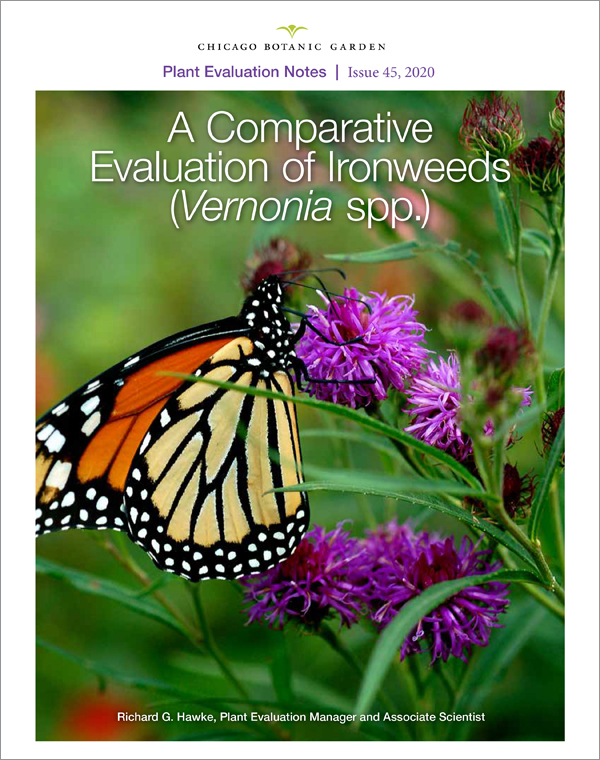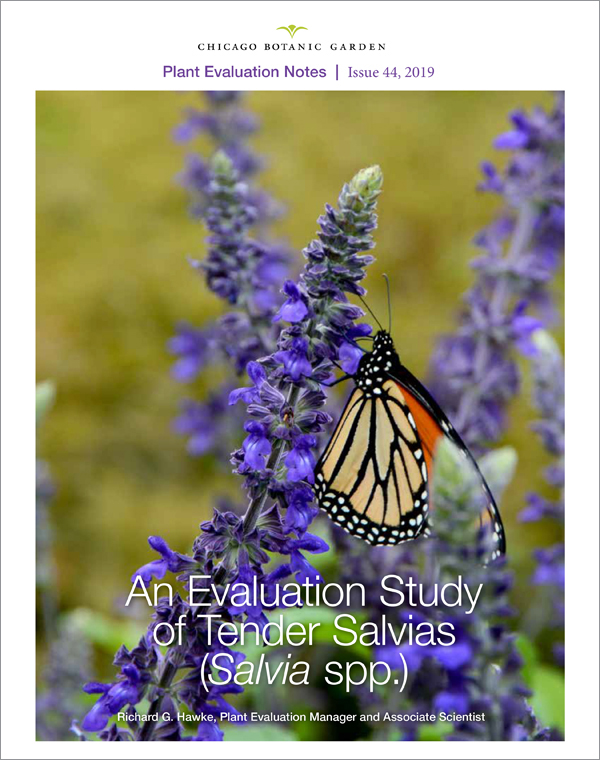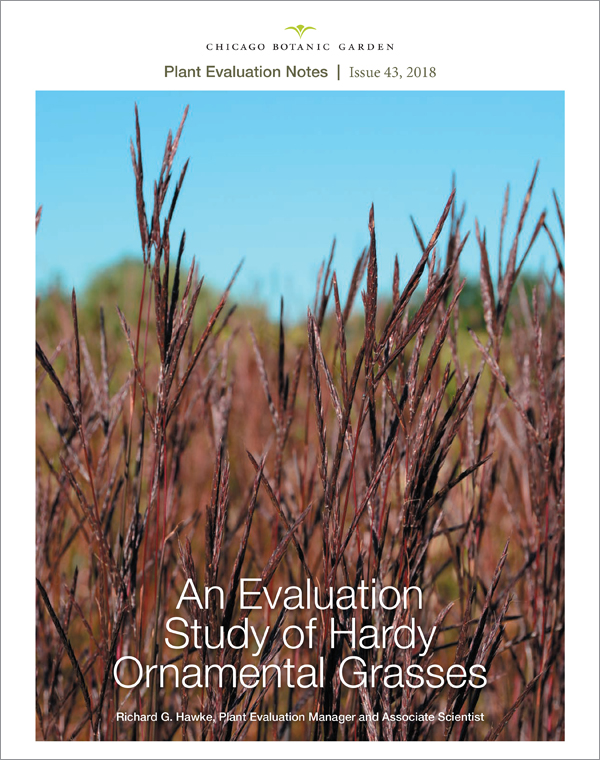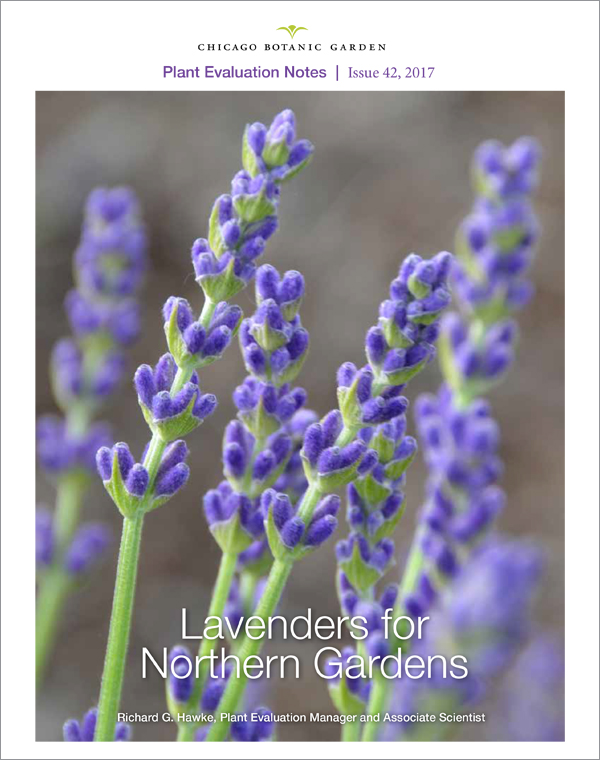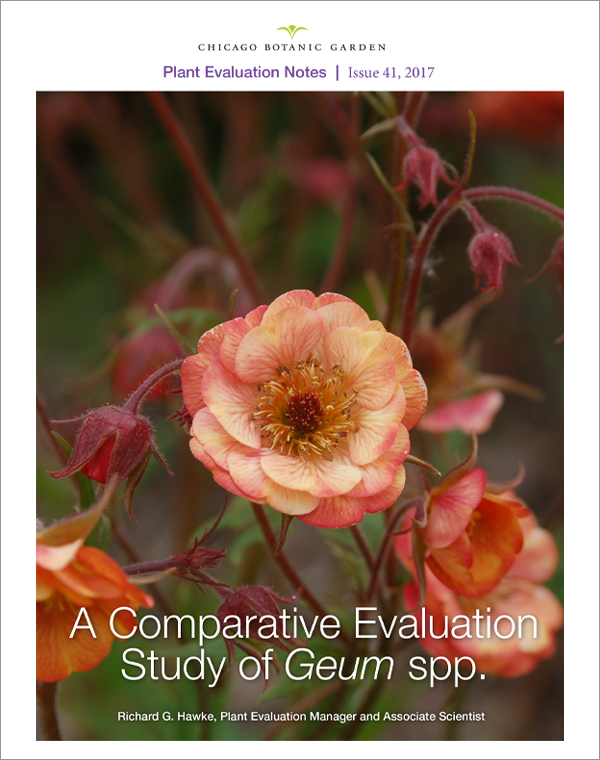

Plant Evaluation
Plant Evaluation
The program evaluates herbaceous and woody plants in comparative trials, ultimately recommending the top performers to gardeners and the horticultural industry. Over 1,200 taxa are currently evaluated in the Bernice E. Lavin Plant Evaluation Garden, Mitsuzo and Kyoko Shida Evaluation Garden, and the Green Roof Gardens.
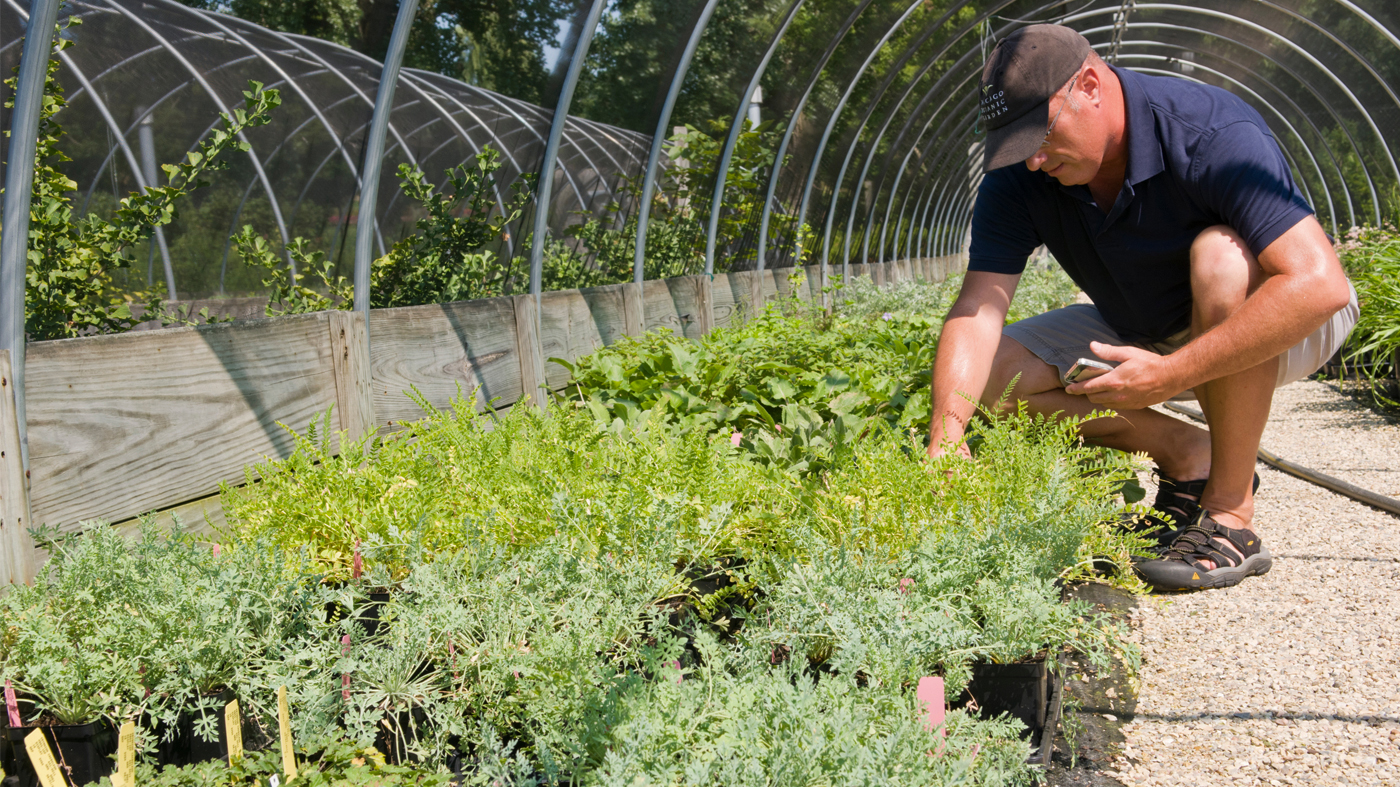
Twenty comparative trials are currently underway, including trials in the Shida Evaluation Garden featuring abelias (Abelia), bugleweeds (Ajuga), goatsbeards (Aruncus), pigsqueaks (Bergenia), Siberian buglosses (Brunnera), sedges (Carex), clematis (Clematis), hellebores (Helleborus), rose of Sharons (Hibiscus syriacus), smooth hydrangeas (Hydrangea arborescens), and stonecrops (Hylotelephium).
New* and ongoing trials in Lavin Plant Evaluation Garden include hyssops (Agastache), masterworts (Astrantia), false indigos (Baptisia), sunflowers (Helianthus), annual sunflowers* (Helianthus annuus), oak-leaf hydrangeas (Hydrangea quercifolia), mountain hydrangeas* (Hydrangea serrata), burnets (Sanguisorba), and goldenrods (Solidago).
The Shida Evaluation Garden houses the rose trials in collaboration with the American Rose Trials for Sustainability® program. The goal of this national program is to identify, through regional evaluation and testing under low-input conditions, the most disease-and pest-resistant, hardiest, and most garden-worthy rose cultivars, and to provide objective, accurate, and reliable information about the cultivars tested for each region to industry professionals and the gardening public.
Trial results are published in Plant Evaluation Notes, which is a Chicago Botanic Garden publication, Fine Gardening magazine, and other horticultural and green industry publications and websites. Plant Evaluation Notes are currently published online.
Plant Collections
About the Plant Evaluation Program
Plant Evaluation Notes
Previously Evaluated: List of Top-performing Genera
View more available pdfs for download viewing
- Issue #1 — Performance Appraisal of Selected Small-Leafed Rhododendrons
- Issue #2 — The Evaluation and Introduction of a Unique Dwarf River Birch
- Issue #3 — A Bamboo Performance Report
- Issue #4 — Hibiscus moscheutos Cultivars and Horticultural Hybrids
- Issue #5 — A Performance Report of Cultivated Yarrows (Achillea)
- Issue #6 — Boxwoods for Northern Midwest Landscapes
- Issue #7 — 1994 Report on Summer-Flowering Annuals
- Issue #8 — Rudbeckia for Cultivated Landscapes
- Issue #9 — A Performance Report of Cultivated Blazing Stars
- Issue #10 — Clematis for Northern Landscapes
- Issue #11 — An Evaluation Report of Shrub Roses
- Issue #12 — Monarda and Powdery Mildew Resistance
- Issue #13 — An Evaluation Report of Selected Phlox Species and Hybrids
- Issue #14 — A Performance Appraisal of the Hardy Sages
- Issue #15 — An Evaluation Report of Goldenrods for the Garden
- Issue #16 — An Evaluation Study of Trycirtis
- Issue #17 — An Appraisal of Pulmonaria for the Garden
- Issue #18 — An Evaluation Study of Hardy Amsonia
- Issue #19 — Garden-Worthy Artemisias
- Issue #20 — Barrenworts for the Shade Garden
- Issue #21 — An Evaluation Study of Coral Bells
- Issue #22 — Hardy Geraniums for Northern Gardens
- Issue #23 — A Comparative Study of Ground Cover Lamium
- Issue #24 — An Evaluation Study of Alchemilla
- Issue #25 — Fall-Blooming Anemones
- Issue #26 — A Garden Study of Sundrops and Evening Primroses
- Issue #27 — A Comparative Study of Cultivated Stachys
- Issue #28 — An Evaluation Report of Meadow Rues
- Issue #29 — A Comparative Study of Cultivated Catmints
- Issue #30 — A Report on Leucanthemum ×superbum and Related Daisies
- Issue #31 — A Performance Appraisal of Hardy Bellflowers
- Issue #32 — A Comparative Study of Platycodon grandiflorus Cultivars
- Issue #33 — Comparative Studies of Veronica and Veronicastrum
- Issue #34 — A Comparative Study of Tradescantia Cultivars
- Issue #35 — A Comparative Study of Phlox paniculata Cultivars
- Issue #36 — A Comparative Study of Cultivated Asters
- Issue #37 — A Comparative Study of Joe-Pye Weeds (Eutrochium spp.) and Their Relatives
- Issue #38 — An Evaluation Study of Plants for Use on Green Roofs
- Issue #39 — A Comparative Study of Lady Ferns and Japanese Painted Ferns
- Issue #40 — A Comparative Trial Report on Rodgersias and Astilboides


